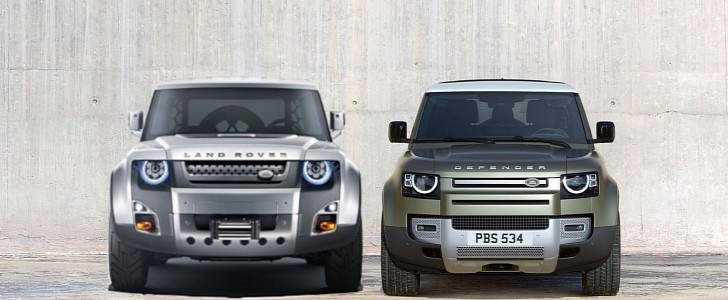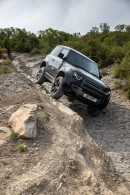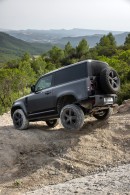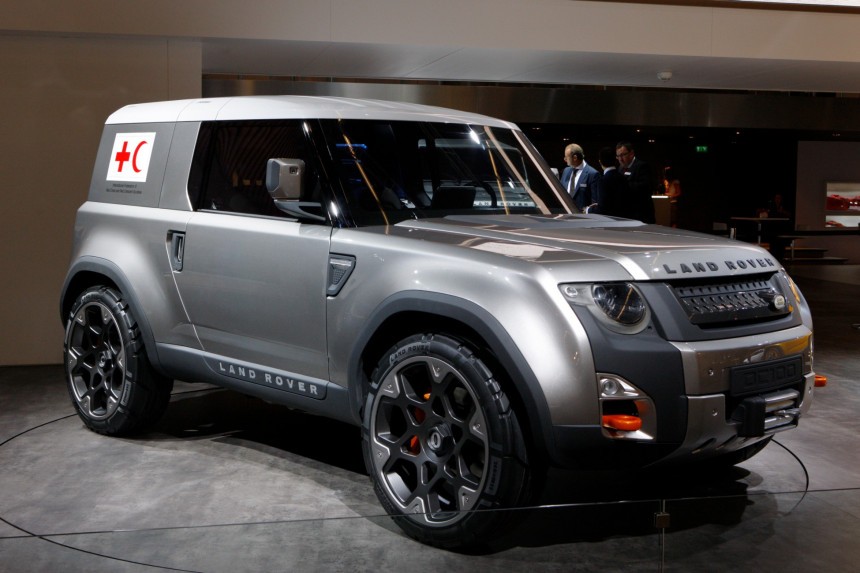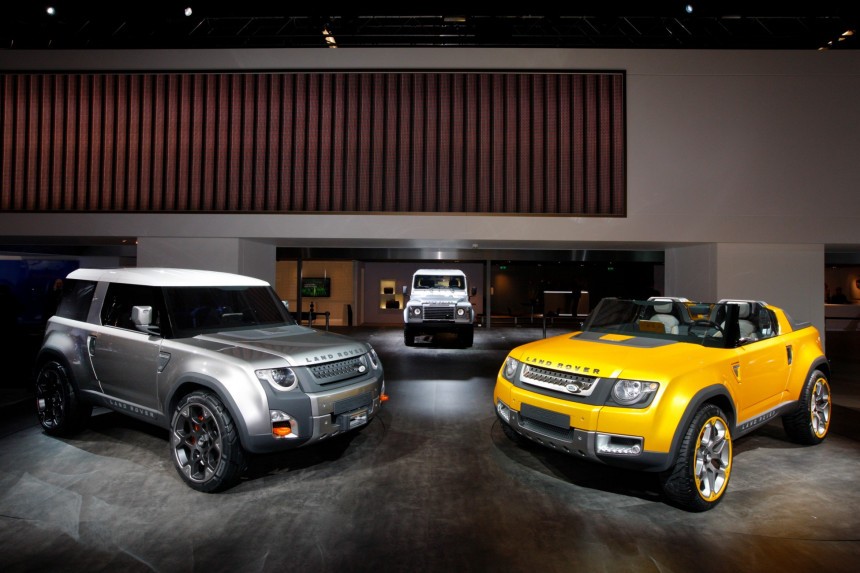When Rover introduced the Land Rover Series I in 1948, it was the right tool at the right moment. Yet, it took the British carmaker more than six decades to replace the famous off-road vehicle.
The Land Rover Series I was conceived as a farm tractor and family vehicle as well. Later on, it evolved into the Series II, Series III, the 90/110, and, finally, into the Defender in 1990. I wrote about its history, and I'll skip the details here. Now, we are going on a tour along 'the concept to reality' road between what the DC100 was and what the 2019 Defender became.
Unlike other concept cars that evolved from just a show car unveiled at some auto show, the Defender II needed a longer gestation period. This is because the brand itself was on the way to recovering from the debris left behind by Ford when the carmaker sold the British brand to Tata Industries in 2008. By that time, the carmaker had less than a year to switch to new emission systems.
As soon as the carmaker obtained the necessary funds from its new parent company, it started to work on the next-generation Defender. Thus, at the 2011 Frankfurt Motor Show, Land Rover unveiled the DC100 Concept. The car was designed by Gerry McGovern, director of design for the British brand. It was obvious that the car was meant to replace the Defender.
Unlike the Audi Q7, which was a completely new chapter for Audi, the DC100 was made by a traditional 4x4 manufacturer. Apart from the specific look, the concept featured specific off-road accessories such as the winch at the front and a snorkel on the side. Moreover, to confirm its legacy in helping people worldwide, it featured the red cross red crescent flag on the sides.
It didn't look as menacing as its predecessor, but it looked like it was ready to take people on board and treat them lightly. Whoever has driven an old, body-on-frame Landie knows that "harsh ride" has a different meaning in a Defender, as in "even rougher." The rounded front area was a shock for the hard-core fans, who didn't like it, even though it was needed to pass the pedestrian safety requirements. Even though it was a concept car, Land Rover didn't want to lie to its customers.
Fast forward to 2019, and the production version was ready. It was unveiled in September, also at the Frankfurt Motor Show, where the DC100 had been presented eight years before. Thus, it started a new era for the model's nameplate. Then, in 2020, the global health crisis started, and all plans went haywire. The production paused for a while, affected by the global chip shortage as well. But Land Rover was stubborn and pushed forward. It had to succeed and prove to the world that now, the Defender is no longer a tractor but a family vehicle.
So, how different is the production version compared to the prototype, you may ask? For starters, the front is not as prominent on the production version as on the DC100 Concept. That might have something to do with the fans, who disagreed with the bulky bumper featured on the concept.
From the side, the windscreen is not flat anymore, which is something everyone agrees that it's better. Still, it was tilted so it could decrease the drag coefficient. It is something like shaving a brick and softening its edges. The biggest difference comes at the rear, where the production version features squared LED taillights instead of the round ones fitted on the concept car. From my point of view, they look better than on the DC100 but have your say in the comment section below.
Inside, the production version has to cope with some strict rules and regulations regarding safety. But that didn't stop the carmaker from installing a cabin fitted with the latest technologies. Lately, even Amazon Alexa is available, and this wasn't even in development when the DC100 was unveiled. As a result, the 2019 model year gets a nice interior, eons above the original Defender, not to mention the 1948 Series I. Land Rover nailed things, and, despite what fans of the old Landie have said, it is a present-day car.
Its platform is evolved from the D7 developed for Jaguar-Land Rover products. It is named D7x and offers unique features, available exclusively on the 2019 Defender. Under the hood, Land Rover installed a range of modern engines, including a plug-in hybrid. Its adjustable ground clearance allows it to go deep enough on trails. It might not be as hardcore as the new Bronco, but some new customers never thought about going through two feet (60 cm) of mud and water.
The only thing the new Defender lost is its rugged appearance and no-status look. While its predecessor was the car for farmers and royal families alike, the new generation jumped in the expensive SUV segment. There are few chances to see one of these vehicles plowing a field but all the probabilities to see it in shopping malls parking lots. Nevertheless, the new model is a success story for Land Rover because the production version was even better than the concept car.
Unlike other concept cars that evolved from just a show car unveiled at some auto show, the Defender II needed a longer gestation period. This is because the brand itself was on the way to recovering from the debris left behind by Ford when the carmaker sold the British brand to Tata Industries in 2008. By that time, the carmaker had less than a year to switch to new emission systems.
As soon as the carmaker obtained the necessary funds from its new parent company, it started to work on the next-generation Defender. Thus, at the 2011 Frankfurt Motor Show, Land Rover unveiled the DC100 Concept. The car was designed by Gerry McGovern, director of design for the British brand. It was obvious that the car was meant to replace the Defender.
It didn't look as menacing as its predecessor, but it looked like it was ready to take people on board and treat them lightly. Whoever has driven an old, body-on-frame Landie knows that "harsh ride" has a different meaning in a Defender, as in "even rougher." The rounded front area was a shock for the hard-core fans, who didn't like it, even though it was needed to pass the pedestrian safety requirements. Even though it was a concept car, Land Rover didn't want to lie to its customers.
Fast forward to 2019, and the production version was ready. It was unveiled in September, also at the Frankfurt Motor Show, where the DC100 had been presented eight years before. Thus, it started a new era for the model's nameplate. Then, in 2020, the global health crisis started, and all plans went haywire. The production paused for a while, affected by the global chip shortage as well. But Land Rover was stubborn and pushed forward. It had to succeed and prove to the world that now, the Defender is no longer a tractor but a family vehicle.
From the side, the windscreen is not flat anymore, which is something everyone agrees that it's better. Still, it was tilted so it could decrease the drag coefficient. It is something like shaving a brick and softening its edges. The biggest difference comes at the rear, where the production version features squared LED taillights instead of the round ones fitted on the concept car. From my point of view, they look better than on the DC100 but have your say in the comment section below.
Inside, the production version has to cope with some strict rules and regulations regarding safety. But that didn't stop the carmaker from installing a cabin fitted with the latest technologies. Lately, even Amazon Alexa is available, and this wasn't even in development when the DC100 was unveiled. As a result, the 2019 model year gets a nice interior, eons above the original Defender, not to mention the 1948 Series I. Land Rover nailed things, and, despite what fans of the old Landie have said, it is a present-day car.
The only thing the new Defender lost is its rugged appearance and no-status look. While its predecessor was the car for farmers and royal families alike, the new generation jumped in the expensive SUV segment. There are few chances to see one of these vehicles plowing a field but all the probabilities to see it in shopping malls parking lots. Nevertheless, the new model is a success story for Land Rover because the production version was even better than the concept car.
